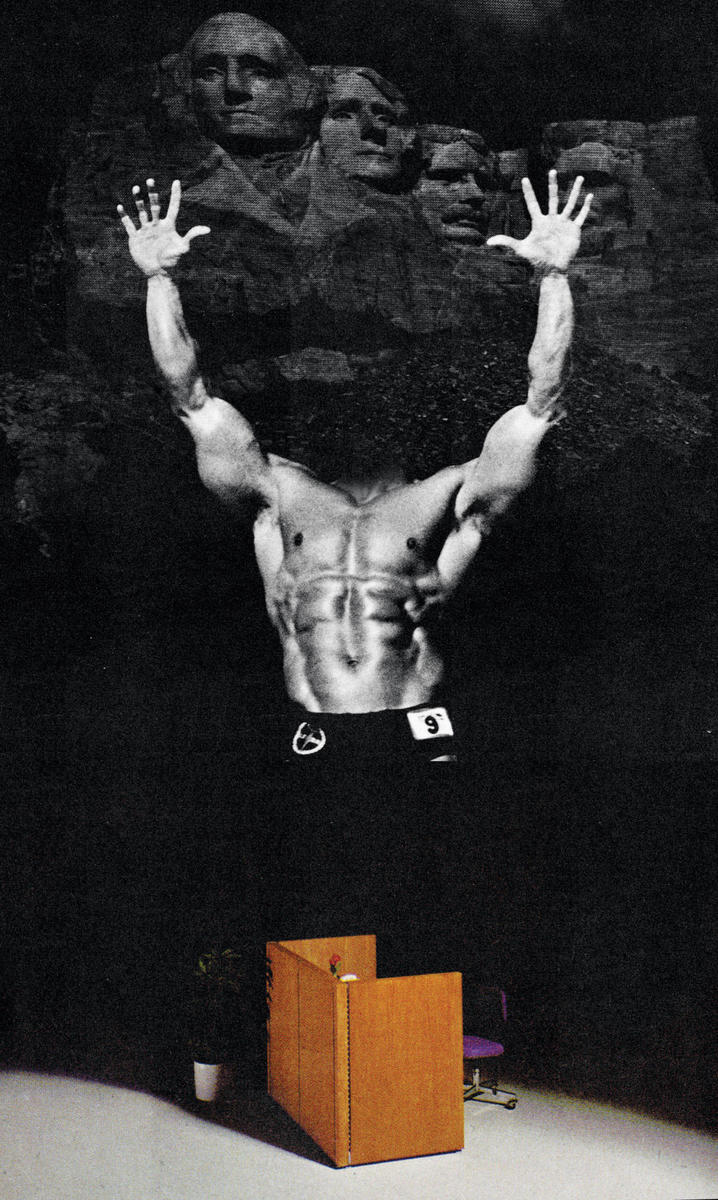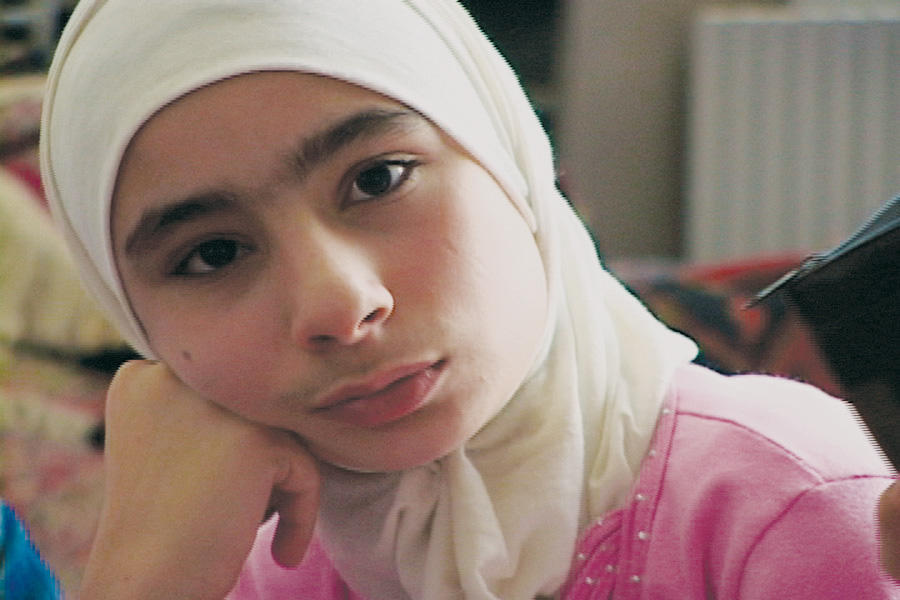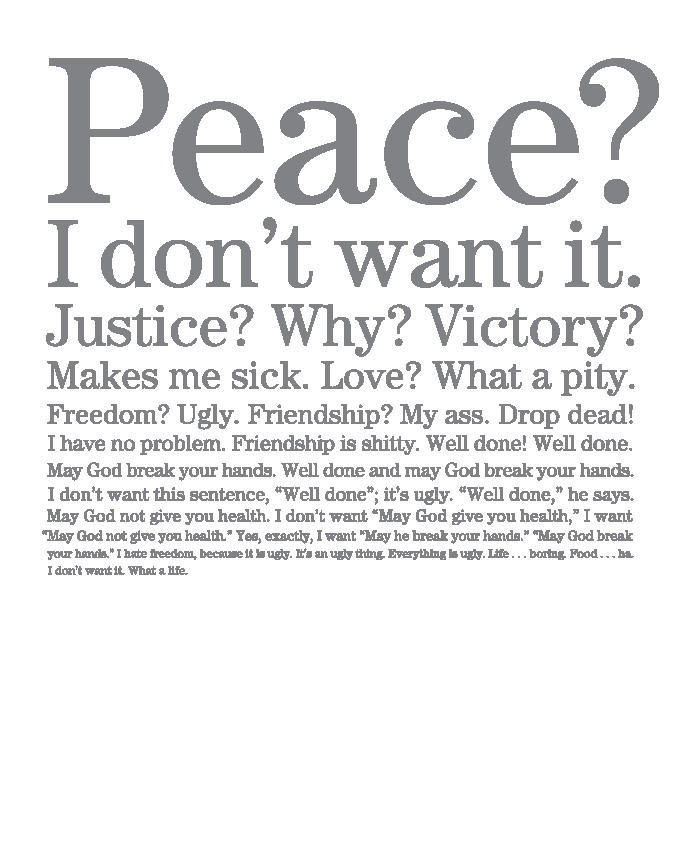
This conversation with Julia Meltzer and David Thorne, also known as the Speculative Archive, took place after a screening of We will live to see these things, or, five pictures of what may come to pass at the 2007 Images Festival in Toronto, where it won the award for Best New International Video.
Naeem Mohaiemen: This was the second time I saw the film, and again I was struck by its pitch-perfect observational style. But one thought occurred as we watched it in that Toronto audience. I felt some discomfort during chapter four — the sequence set inside the girl’s Qur’an school. Even though there was nothing of this in the filmed image, I kept worrying that the audience was going to project its own fantasies and fetishes onto that sequence.
The Speculative Archive: In the Qur’an school section, it is possible that some viewers might see a kind of failure represented in it: a failure of secularism and Western liberal democratic values to triumph over a faith-based worldview, for instance. Yet those who espouse a society ruled by Islam might see this section as hopeful and positive.
The section in the Qur’an school, as you say, works through a kind of mismatch between the visual and audience expectation. The images of young children in the mosque — beautiful and impressionable young girls, for instance, reciting religious texts — are potent and compelling. Perhaps what provoked your discomfort as you viewed this section is the possibility that an audience, particularly a Western one, is prone to project into the future, when looking at these images, and to ask the questions: What will these children become? How will these texts shape them? Is this education good for them? What kind of force is this in the world?

But rather than images of young men or boys in madrasas, or any of the other endlessly repeated representations of the threat of Islam, we focus on a more mundane view into the daily life happenings of a religious school. We chose to concentrate on the tension between moments of memorization, instruction, and devotion, and moments of kids being kids.
NM: There are five discrete films, all set in Syria — although I felt they could be other places I have known — but you very deliberately stitched them together in a particular sequence. There is a cumulative and sequential effect on the viewer. You used a similar story-in-chapters structure in It’s not my memory of it, although there the time and place is more scattered. But Take into the air my quiet breath also exists as a single channel piece broken out from the quintet, and Not a matter of if but when is a piece filmed in Syria around the same period, but not dovetailed into We will live. Can you talk about your method, structure, summing, and subtracting, quintet vs. single piece, et cetera?
SA: The structure of We will live to see these things is, as you mention, a sequence of five discrete “films.” Each section is conceived as a separate story with a distinct approach to the image, the text, and the music. And each section is conceived in relation to the others. The thread is that each section takes up a particular way that people imagine the future in the particular place called Syria. These “pictures” of the future are: one, everything remains as is — the prevailing sense of stasis will prevail; two, a perfect leader will arrive to steer a proper course through the difficult times; three, a space for democratic politics will open up further; four, God, through the faithful, will light the way; five, the pressures from US policy in the region will bring greater chaos. These five pictures were the ones we most frequently encountered and discussed during our time in Damascus, and each became the focal point for a section of the film.
We are distributing and exhibiting the first section of the film, which focuses on a building in downtown Damascus, on its own under the title “take into the air my quiet breath.” This section works well by itself because it has a very clear voice and narrative arc. In terms of the longer film, the ways the sections play off of each other and the cumulative effect for the viewer of watching a carefully structured sequence are important.
The other work we produced out of this time in Syria is Not a matter of if but when, a series of monologues by Syrian performer Rami Farah. We originally thought we would mix this material in with everything else, but as we edited his monologues, it became clear that this was an entirely separate work, even if some of the motivating questions and ideas behind it are shared with We will live… Our main interest in all of these works has been to develop narratives about the difficulties of thinking about the future differently in a time when so much conflict and destruction stem, in part at least, from convictions that people hold about the future.

NM: Both dialogue and text are at every point natural and unhurried. One part that’s really striking for me is the song that builds to a steady crescendo during the horse jump session. Is that really not the Bashar Assad national anthem? If it’s not, it should be. Anyway, how do you build your dialogue and stories, and that mesmerizing text sequence at the end? How much lived experience bleeds into text; how much invention comes from unconscious osmosis?
SA: The first section about the building is based on interviews with architects, engineers, and urban historians. We developed a script for the narration from both the facts and the feelings of these interviews. There is a fairly loose approach to accuracy in terms of the timeline of the construction of the building, in part because the timeline is not so clear, but also because we wanted to amplify something about the experience of time in, around, and through this building as a metaphor for the Syrian regime.
The text in the second section, with the horse jumping, is written as a kind of incantation or poem, with words drawn from what we might call the general repository of expressions that have to do with desire for a leader and from the rhetoric of propaganda. The text is delivered in Arabic by an older man and in English by a young boy, and this alternation emphasizes the familial, the generational, and the historical.
The interview in the third section is an interview. There is nothing invented about it, though some viewers have asked if the interviewee is an actor. (He is not. He is Yassin Haj Saleh, a Syrian dissident intellectual.) We approached this interview in a very conventional documentary way. What hopefully shifts the ground of it, and the impact of what he says, is the way it is built into the whole piece.
The section in the Qur’an school is also approached in a very straightforward, almost vérité manner, visually speaking, but we structured the material as a story that focuses on the process through which children learn faith. The final section is the most “invented,” but draws from the rhetoric of neoconservatism and the ways in which fantasy has been articulated as policy under the current US administration. The text is structured around a grammatical motif — “I see X” — but rather than being spoken by the source of the vision, it is introduced through the voice of someone upon whom this vision has been imposed, a voice that has been forced to see according to someone else’s vision and to live with its effects.
Most of the time, we start with an idea for a visual approach. In the case of the equestrian competition, we were searching for a way to represent the desire for and the myth of a perfect leader. We worked through many texts until we found something that seemed to click in a very rough form. From there, we edited and rewrote until the section flowed and felt unforced. In general, we strive to develop texts that are emotionally resonant and contain some element of the ideas we have been discussing over the course of the project. That text can be ten or one-hundred steps away from where we started.
NM: Your process blends fiction and fact, archive and fabrication, document and ephemera. It’s been there throughout your work, but the new project digs deeper into a DMZ of anti-reportage. What are the research, storytelling, and political objectives in play for you?
SA: In all of our recent work, there are facts and fictions, but we call the work “documentary.” Not “experimental documentary,” not “mockumentary,” not “quasi-fictional documentary,” or any of the other new genres that point to some kind of crisis of the real. We went to Syria and we made some documents and we put them together to make a documentary — a record of a particular time in a particular place. For instance, we looked at the building in downtown Damascus and asked, “What is this building a record of? And what visions of the future are embodied in it?” It is not always possible, and maybe not even desirable, to separate fact from fiction when it comes to answering such questions.
NM: After you won the prize at Images, one of you wryly commented to me, “There is big money in this field if you stick with it” — obviously a tongue-in-cheek reference to the fact that there is, in fact, not much funding for certain kinds of politically engaged work. How do we carve out supportive structures for this kind of practice, since it can’t just be made, and artists can’t just live on thin air?
SA: In the world we live in, doing anything creative that doesn’t generate a living income can be something of a struggle. The question “Why are we doing this?” comes up often. But with each successive project we have worked on, we have tried to push ourselves to a new level of craft, story, and form around a complicated set of ideas. Certainly, more than the economic rewards, it is this learning process that drives us. Somehow with each project new doors keep opening up. However utopian it may sound, we try to maintain some belief and faith that work that engages with contemporary political and social issues, and is simple, elegant, and focused, will speak to an audience and will ultimately find support.
And of course, deep down we know that as artists, in fact, it is possible to live on thin air.
The Speculative Archive produces videos, photographs, installations, and published texts. From 1999 to 2003, Archive projects focused on state secrecy and the production of the past. Current works address the use of documents-images, texts, objects, bodies, and physical structures-to project and claim visions of the future. The Archive is a collaboration of Los Angeles-based artists Julia Meltzer and David Thorne.
Naeem Mohaiemen works on projects in Dhaka and New York.